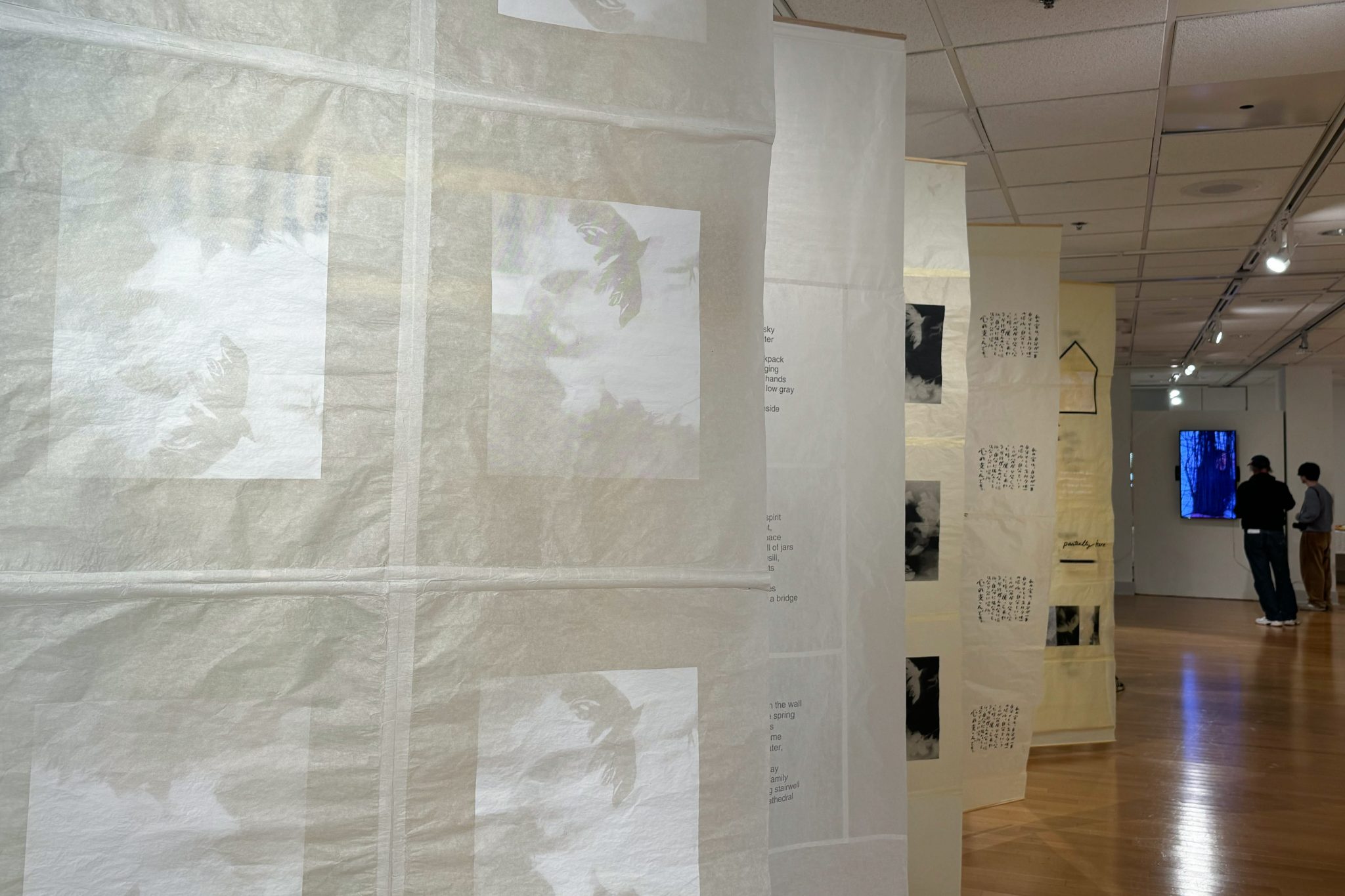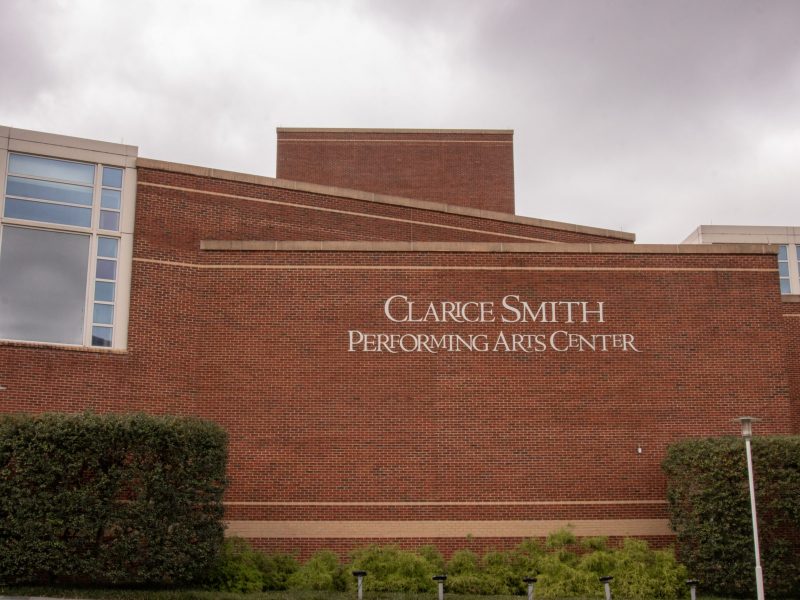The Stamp Gallery’s latest exhibit, “We Live in the Sky: Home, Displacement, Identity,” was unveiled Wednesday and incorporates themes surrounding moving and belonging into multimedia artwork.
The exhibit is an eclectic blend of the works of Mami Takahashi and Tori Ellison — a former guest lecturer at this university in two-dimensional design fundamentals.
In combining traditional mediums like painting with video, audio and poetry, Takahashi and Ellison visualized their experiences of moving away from home.
Both nationally recognized artists, Ellison largely specializes in sculpting, dress design and theatrics, while Takahashi’s large-scale works utilize photography, performance and street art.
In Ellison’s centerpiece, “Sky Writing” — which she collaborated on with fine arts graduate student Varvara Tokareva — six paper panels drape from the ceiling. They display illustrations of swifts — a species of birds — as well as writing excerpts from Tokareva, anonymous students and community members and poet Pablo Neruda.
[Cultoure Magazine’s first showcase highlights local musicians]
“My home is the only place where I can be myself,” one panel said in Japanese. “It’s irreplaceable, where I can return to feel like I’m whole, not just a part of myself.”
Ellison said that she chose the swift due to its ever-moving lifestyle, as the species spends almost its entire life in the sky. She paralleled this to the moving she’s done in her own life.
Takahashi integrates her experiences as an immigrant from Tokyo into her work, blending traditional Japanese art methods with contemporary methods.
The “Title Will Be Here” series, for example, transcribes modernized haikus onto oxidized silver leaf — a traditional Japanese art style.
“It’s kind of like negotiation for my ethnicity, where tradition is strong but we are living contemporary,” Takahashi said.
Another piece, titled “Audio Journal,” is a sound collage that uses interviews from immigrant families in College Park and Austin, Texas about their new lives in the United States. Takahashi said she drew inspiration for the piece from the barrier many immigrants face due to their strong accents.
Viewers are encouraged to stand in the middle of a circle on the floor, where cluttered voices will become more intimate.
The exhibit also features two looping videos of Takahashi walling herself off from the audience. She writes a stream of consciousness across the screen in “Writing Myself” and constricts herself in a weave of black yarn in “Cage Mentality.”
Takahashi said that people would often stare at her when she spoke in public due to her strong accent, which inspired the two videos.
“[It’s] a metaphor for creating my cage,” she said. “I can’t go out, but also people cannot come to me.”
Ellison touched on identity further in her pieces “Shell” and “Burnt Dress.” Both designed dresses, she wanted them to act as surrogates to the viewers’ bodies to reflect how people present themselves.
“Burnt Dress” represents her disillusion with this perception, showcasing charred remains with the outline of a dress.
[Zine Club relaunch invites students to create, connect through design]
Gregory Austin, a junior geographical sciences major, was immediately drawn in by the darkness of the piece, appreciating the blend of charcoal and acrylic.
Dress designs are a larger motif in her body of work. Her previous work, “Self-Evident,” explores the family tree of Sally Hemmings, a woman who was enslaved and sexually abused by former president Thomas Jefferson. The piece confronts identity and self-expression intersected with themes of freedom.
Ellison said that she wants viewers of “We Live in the Sky” to draw connections to their own life experiences.
“I hope that it has some essential meaning for them that’s personal,” she said. “That’s when I feel like I’ve really connected with my work.”



